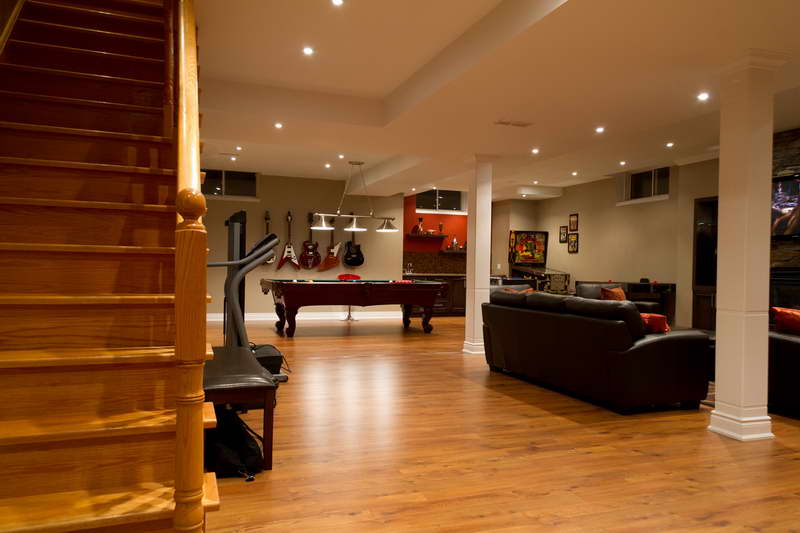One of the most cost effective and easiest ways to add living spaces in our house is through basement remodelling. We could do this without taking up some space from our garden or yard. For each foot square of living space added, basement remodelling will cost only up to a third compared to making new building with roof on top of it. The whole task should be completed much faster, because the walls, electrical system and foundation are already in place. One of the most significant concerns is how we should use the new living space. To give more flexibility, we could also create multiple rooms to add flexibility.
Another thing to decide is whether we need a soft or hard ceiling. A suspended or soft ceiling should proper conceal all the wires, ducts and pipes from view. This should make future upgrades easy, because soft ceiling can be removed when we need to make changes and repairs. However, this may not be a proper solution if the ceiling of our basement is already low. In this case, we may want to make the living space in the basement feel like a smooth continuation of the house, so a hard wallboard ceiling could be the only way to go. We should make plans carefully, but still consider how we could access the wires and pipes in the future. Because hot and cold water lines could be enclosed inside the hard ceiling, we should wrap them to prevent condensation from ruining our ceiling.
No matter what walls used in our basement, we should make sure that they are properly insulated to maintain a comfortable level of temperature and humidity. We could ask our contractors to find out about various solutions to minimize moisture. Common problems in our basements may include musty smell and frequent appearance of dust mites, mildew, molds and other types of allergens. We should be able to arrange to have experts from local services to inspect our home and provide advices on weatherizing and insulating. These tips should also help us reduce energy bills and they could provide free consultation.
There are multiple flooring options available for basements. It should be noted that marble, tile and most ceramic finishes are usually colder. We could use thicker carpets to keep our feet warm. Heated masonry should help reduce the humidity level, although it could be more expensive to set up and operate. However, we should consider that carpets in basement tend to retain moisture and they are ideal habitats for dust mites, mildew and mold to thrive. In fact, much of the “basement smell” could originate from our carpeting. We should find ways to not pay extra for basement remodelling and one of the most efficient method is by using wood panelling.
A successful basement remodelling project should give us basement that doesn’t smell, feel and look like a basement at all. In general, the newly remodelled basement should feel and like the rest of our home.

